Health plans operate in a complex landscape where balancing quality care with financial sustainability is critical. Achieving a strong return on investment (ROI) requires a strategic focus on improving efficiencies and implementing cost avoidance measures. This blog explores how health plans can optimize operations, reduce waste, and drive better outcomes for members and stakeholders by leveraging the right healthcare technology.
Page Content
Understanding ROI in Health Plans
Health plans operate in a complex landscape where balancing quality care with financial sustainability is critical. Achieving a strong return on investment (ROI) requires a strategic focus on improving efficiencies and implementing cost avoidance measures. This blog explores how health plans can optimize operations, reduce waste, and drive better outcomes for members and stakeholders by leveraging the right healthcare technology.
Key Metrics for ROI
- Medical Loss Ratio (MLR): The percentage of premium revenue spent on medical care. Optimizing MLR ensures compliance with regulations while maintaining profitability.
- Administrative Cost Ratio: Reducing overhead costs without compromising service quality.
- Member Retention Rates: Higher retention reduces acquisition costs and stabilizes revenue.
- Cost Per Member Per Month (PMPM): A critical indicator of cost efficiency in delivering care.
Improving Efficiencies for Better ROI
Operational efficiency is the backbone of a financially healthy health plan. By streamlining processes and adopting innovative solutions, health plans can reduce waste and improve service delivery.
- Automation and Technology Integration
The right healthcare technology is a game-changer for health plans, enabling automation, data-driven decision-making, and seamless integration across systems. Strategic investments in technology can significantly reduce administrative burdens and enhance care delivery. For example:
- Automated Claims Processing: Reduces manual errors and speeds up reimbursement cycles, lowering administrative costs by up to 30%.
- Automated Prior Authorization: Streamlines the approval process by using AI to assess medical necessity against evidence-based guidelines, reducing processing time by up to 50% and minimizing delays in care delivery.
- Predictive Analytics: Identifies high-risk members for early interventions, improving care outcomes and reducing hospital readmissions.
- Telehealth Platforms: Expand access to care while reducing costs associated with in-person visits.
- Interoperable Systems: The right technology ensures seamless data exchange between EHRs, claims systems, and care management platforms, reducing redundancies and improving decision-making accuracy.
- Real-Time Data Dashboards: Provide actionable insights for providers and administrators, enabling proactive management of member health and operational performance.
Benefits of the Right Healthcare Technology:
Choosing the right technology stack is critical for maximizing ROI. Platforms that integrate artificial intelligence, cloud-based infrastructure, and interoperability standards (e.g., FHIR) empower health plans to scale efficiently, adapt to regulatory changes, and improve member experiences. For instance, AI-driven tools can reduce manual workloads by automating repetitive tasks, while interoperable systems eliminate data silos, ensuring a holistic view of member health. These technologies not only cut costs but also enhance care quality, leading to higher member satisfaction and retention.
- Care Coordination and Population Health Management
Effective care coordination ensures members receive timely, appropriate care, reducing unnecessary procedures and hospitalizations. The right technology enhances these efforts by providing robust tools for collaboration and data analysis. Strategies include:
- Care Management Programs: Targeted interventions for chronic conditions like diabetes or hypertension can reduce PMPM costs by 10-15%.
- Data-Driven Insights: Integrating electronic health records (EHRs) with analytics platforms helps identify gaps in care and optimize resource allocation.
- Provider Collaboration: Partnering with providers to implement value-based care models aligns incentives and reduces overutilization.
- Member Engagement and Education
Engaging members through wellness programs and education initiatives drives better health outcomes and lowers costs. Technology plays a pivotal role here by delivering personalized, accessible tools. Examples include:
- Preventive Care Campaigns: Promoting screenings and vaccinations reduces the incidence of costly chronic conditions.
- Digital Tools: Mobile apps and patient portals, powered by user-friendly technology, empower members to manage their health, reducing call center volumes and administrative costs.
Measuring the Impact
To quantify ROI, health plans should track key performance indicators (KPIs) before and after implementing efficiency and cost avoidance strategies. Examples include:
- Reduction in Hospital Readmissions: A 10% decrease can save millions annually for a mid-sized plan.
- Administrative Cost Savings: Automation can reduce administrative expenses by 20-30%.
- Improved Health Outcomes: Lower PMPM costs and higher member satisfaction scores indicate success.
Conclusion
Maximizing ROI for health plans requires a dual focus on improving efficiencies and proactive cost avoidance. By leveraging the right healthcare technology, enhancing care coordination, and preventing unnecessary expenses, health plans can deliver high-quality care while maintaining financial health. InfoMC’s integrated care management platform supports these goals by providing streamlined care and utilization management workflows, care coordination tools, robust analytics, and advanced interoperability to optimize operations and reduce costs. Investing in these strategies not only drives better outcomes for members but also ensures long-term sustainability in a competitive market.




